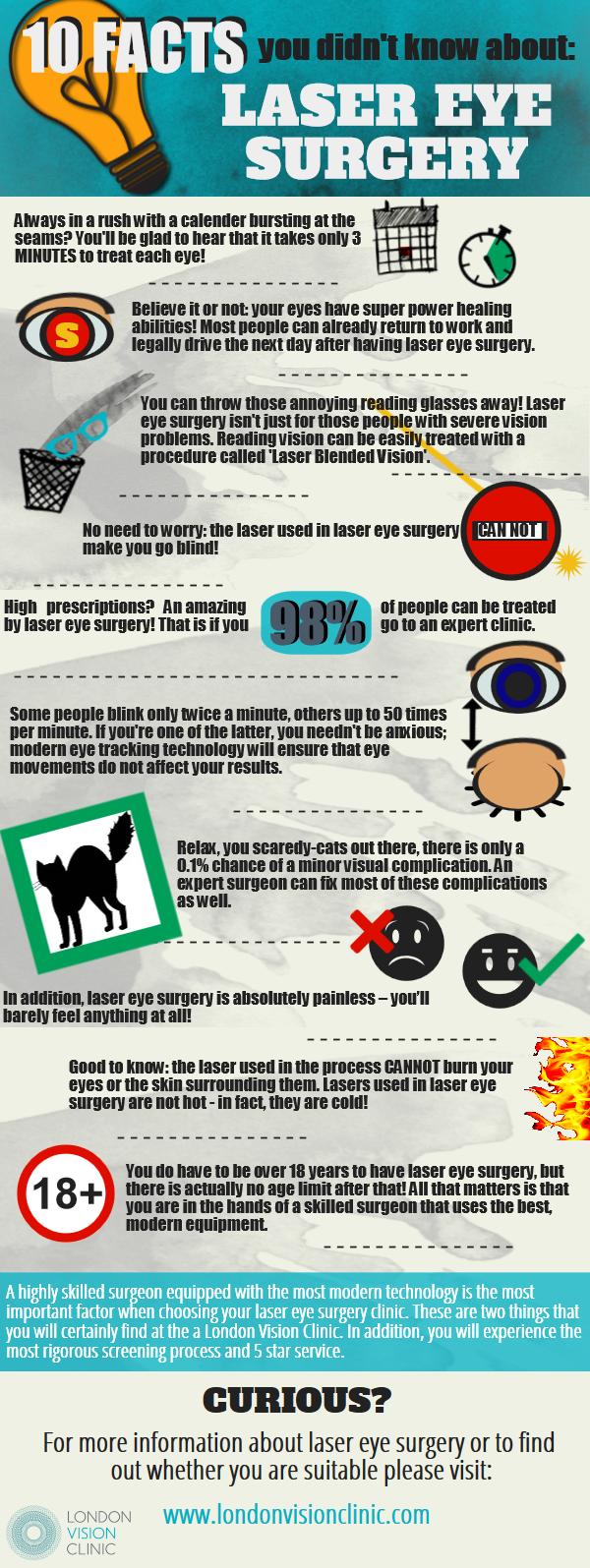How Does SMILE Eye Surgical Procedure Compare To LASIK And PRK?
How Does SMILE Eye Surgical Procedure Compare To LASIK And PRK?
Blog Article
Content Author-Humphries Tang
If you've been thinking about SMILE eye surgery, you may question how it compares to LASIK and PRK. Each procedure has its very own set of advantages and considerations. From quicker recovery times to potential dangers, there are essential distinctions you ought to recognize before choosing. Understanding cataract surgery before vitrectomy will aid you make an enlightened choice that lines up with your certain needs and assumptions. Interested to know more concerning exactly how these procedures compare in detail? Continue exploring to gain a thorough understanding of SMILE, LASIK, and PRK.
SMILE Eye Surgery Overview
If you're taking into consideration SMILE eye surgery, you'll locate it to be a minimally invasive treatment with a fast healing time. During Eye Surgery Nv (Tiny Incision Lenticule Extraction), a laser is utilized to develop a small, specific cut in the cornea to eliminate a little item of cells, reshaping it to remedy your vision. have a peek at this web-site varies from LASIK, where a flap is produced, and PRK, where the external layer of the cornea is entirely removed.
One of the key advantages of SMILE is its minimally invasive nature, causing a faster healing process and much less pain post-surgery. The recuperation time for SMILE is relatively quick, with numerous people experiencing enhanced vision within a day or 2. This makes it a preferred selection for those seeking a hassle-free and reliable vision correction procedure. Furthermore, Monovision LASIK Testimonials has been revealed to have a reduced threat of completely dry eye syndrome contrasted to LASIK, making it a favorable alternative for individuals concerned about this potential side effect.
Distinctions In Between SMILE, LASIK, and PRK
When contrasting SMILE, LASIK, and PRK eye surgical procedures, it's important to understand the unique methods used in each treatment for vision correction.
SMILE (Small Incision Lenticule Removal) is a minimally intrusive treatment that involves producing a tiny cut to extract a lenticule from the cornea, reshaping it to fix vision.
LASIK (Laser-Assisted In Situ Keratomileusis) entails creating a thin flap on the cornea, using a laser to improve the underlying cells, and afterwards repositioning the flap.
PRK (Photorefractive Keratectomy) eliminates the outer layer of the cornea before reshaping the cells with a laser.
The major difference hinges on the method the cornea is accessed and dealt with. SMILE is flapless, making it a good choice for individuals with slim corneas or those involved in contact sports. LASIK uses rapid visual recuperation because of the flap development, but it may position a higher risk of flap-related problems. PRK, although having a much longer healing duration, stays clear of flap-related concerns altogether.
Understanding these variances is essential in choosing one of the most ideal treatment for your vision adjustment requirements.
Benefits And Drawbacks Comparison
To review the advantages and drawbacks of SMILE, LASIK, and PRK eye surgeries, it's essential to take into consideration the particular benefits and prospective restrictions of each treatment. SMILE surgery provides the advantage of a minimally intrusive procedure, with a smaller sized incision and potentially quicker recovery time contrasted to LASIK and PRK. It also minimizes the risk of dry eye post-surgery, a common side effect of LASIK. However, SMILE may have constraints in dealing with greater degrees of nearsightedness or astigmatism contrasted to LASIK.
LASIK surgical procedure provides fast aesthetic recuperation and marginal discomfort throughout the procedure. It's extremely efficient in dealing with a variety of refractive errors, including nearsightedness, hyperopia, and astigmatism. Yet, LASIK carries a danger of flap problems, which can influence the corneal structure.
PRK eye surgery, while not as popular as LASIK, prevents producing a corneal flap, decreasing the risk of flap-related problems. It appropriates for individuals with slim corneas or uneven corneal surfaces. Nonetheless, PRK has a longer recuperation time and may involve more discomfort during the healing process.
Verdict
So, when it comes to picking between SMILE, LASIK, and PRK, think of it like selecting the perfect set of footwear. SMILE resembles a streamlined, comfy set of tennis shoes - fast and simple.
LASIK is extra like fashionable high heels - flashy and fast, yet with some possible dangers.
PRK is like sturdy treking boots - trusted and long lasting, yet requiring a bit more time and effort.
Inevitably, the very best selection depends upon your individual requirements and preferences.
